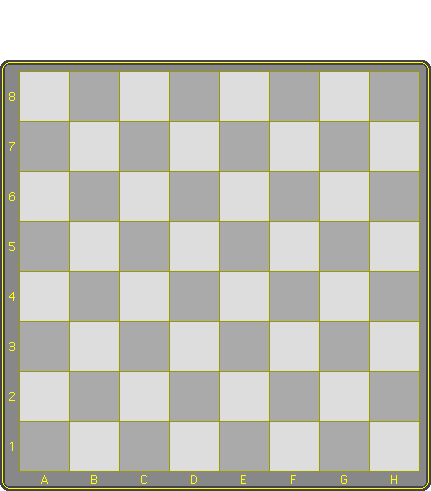Page 1 of 7
by Benedikt Rosenau.A different way of capture
Column Checkers is based on a different way of capture than Checkers. In Column Checkers capture means indeed capture, not annihilation: all captured pieces remain on the board at all times. If a man captures another man, the capturing man completes his jump as usual, but the captured man is taken along underneath it. This way, a stack of two men of different colors is formed. It moves and captures as one piece and is controlled by the player who owns the topmost man. If a stack is jumped by an opponent's piece (man or stack), the capture always involves only the topmost man. Single men are simply stacks of height one, and the same rules apply to them.
A fundamental consequence
The six column checkers variants covered in this essay are vastly different games, yet they have one common feature embedded in the mechanics: in all games, whenever a single man is captured, the number of pieces on the board decreases by one. Since there is no way to increase the number of pieces, all games are always 'moving upwards', that is towards less but higher pieces.
Piece composition in Bashni and Lasca
In Bashni and Lasca, if the topmost piece of a stack belongs to White, then it will have one of the following two compositions:
- Either all men in the stack belong to White ...
- ... or there are two layers in the stack, the upper layer belonging to White, and the lower layer to Black.
| Here are some of the ways a white piece may look in Bashni or Lasca. By the nature of the capturing mechanism, prisoners will always be under a cap of the opponent's men or kings, never in between them. The four pieces on the left move and capture as a man, because there's a man on top. The three pieces on the right have a king on top and thus may move and capture as kings. |
Now, imagine there is a stack with several captured black pieces. By the rule above, it is topped by one or several white pieces. If these white pieces are captured, a stack consisting entirely of black men emerges.
An example
Have a look at the following opening in Bashni, the Russian mother of all column checkers games. Its structure is based on Shashki, Russian Checkers, where backwards capture by pieces is allowed. Capture is obligatory, but majority capture does not precede.
| |||||||
As the example shows, it is often advantageous to feed several of one’s own men to a not too strong stack of the opponent and then capture the top layer of the stack. The techniques for feeding come from give-away Checkers, those for capturing from standard Checkers. This gives column checkers a Janus face. Material advantage is measured in terms of the composition of pieces rather than their number.
Another important feature is, in the words of David Pritchard, “a sudden reversal of fortunes”. Even in a overwhelmingly superior situation, careless play may provoke a surprising blow that seemingly comes out of nowhere. If you're the victim, remember that it might work for you as well, in that very game. In other words, do not resign a column checkers game as long as there is an ever so faint chance of survival. And if you have the better position, calmly eliminate all risks.
Two column checkers variant feature promotion, Bashni and Lasca. If a stack reaches the back row, then only the topmost man is promoted to a king. Kings, whether single or topping a stack, are captured exactly the same way as men. A captured king moves as king to its place at the bottom of the capturing stack, just as an ordinary man.






